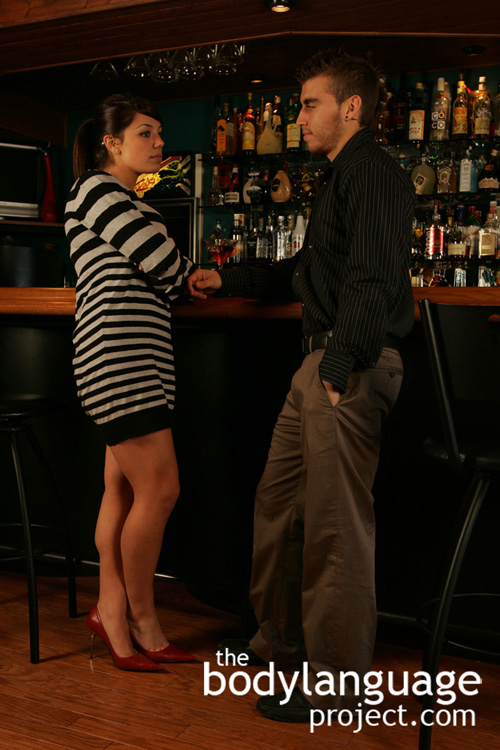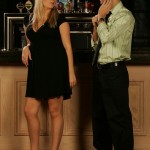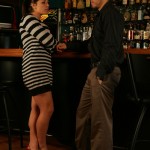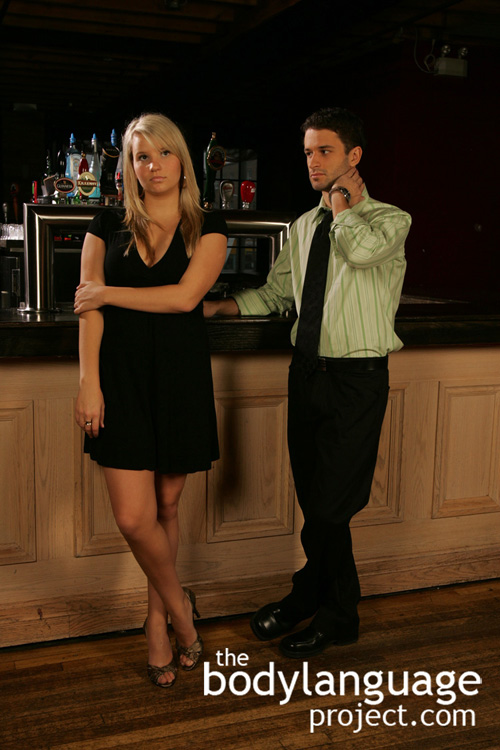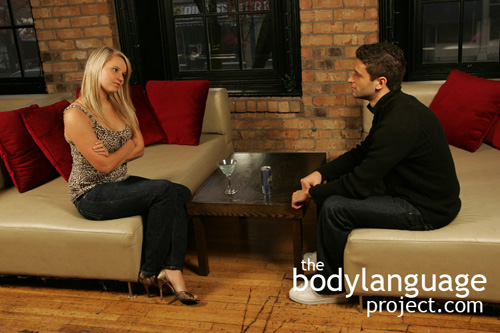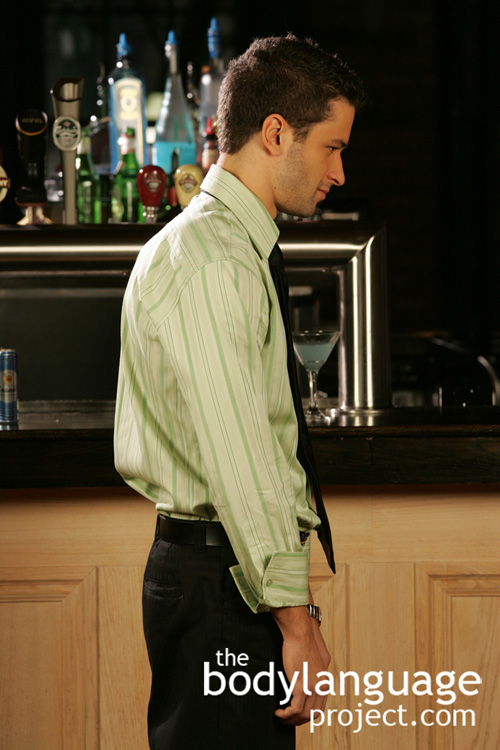
Slumped posture indicates to others that life has given you a bad hand.

Confident erect posture.

Asymmetrical posture shows a lack of confidence.
Posture is underrated in daily life but it can tell us a lot about a person. Posture refers not only to the erectness of our bodies, but also to our body orientation, direction of lean, and the degree to which our bodies are open and inviting.
Good healthy posture does not mean that the body is straight up and down since the natural spine has curves, but it does mean that the spine is aligned and not twisted. There are natural curves between the thoracic (upper) and lumbar (lower) regions where the upper curves slight backwards and the lower slightly forward. To be technical, the ears, shoulders, hips, knees and ankles should align as if a plumb line where run from top to bottom. This is called the neutral position because the body is best able to hold this posture without stressing joints, muscle and bones. What it really means is that the weight of the body is held by the bones and not by the muscles. You can imagine the structure of a house whose weight is carried down from the rafters to the side and supporting walls, then straight down to the foundation. A house that leans puts uneven stress over certain walls causing a risk of collapse. A good posture promotes breathing, circulation and balance. Persistent improper posture can lead to general discomfort, long term damage, or even deformities. While there are medical reasons for holding good posture, there are certainly nonverbal reasons for keeping a good level body.
Having rounded shoulders for example, shows that a person is inactive in the conversation, as does leaning away or even closing the body off. We also attribute negative ideas to people with poor posture. People that slumped over or habitually lean on their elbows while seated or against a wall come off as lazy and careless; sloppy. People with poor posture often come across as lacking confidence. Conversely, being too rigid can come off as stiff, awkward, stressed, nervous and uncomfortable. Holding good posture shows the world that one is in control, confident and powerful.
Shorter people can even add several inches with an upright posture over someone with poor posture. The effect is magnified even moreso while seated, and can even level the field entirely. A posture experiment is simple so feel free to try it at the next board meeting and see just how much height you can gain just by holding a more upright posture. The postural advantage therefore is best used by striking a happy medium between being proper and upright but not appearing stiff. Keep the shoulders back, with your spin generally straight and head upright.
Body orientation, a subset of posture, can also convey information. For example, having weight unevenly distributed across the legs can show that a person is ready to leave a conversation by slumping toward the desired exit direction. Usually this is a door, or hallway. Reading or using this posture can tell you when its time to wrap things up or tell others when you would prefer to end the conversation. I use this skill on adamant door to door salespeople. Simply by orienting my body away from the salesman and even slightly moving in that direction I can show the salesman that I am serious about my disinterest. You can easily do the same.
Leaning towards or away also conveys useful meanings. Someone interested in the conversation will literally be thrusting themselves forward into the conversation by moving their bodies forward toward the speaker. Other times the body leans much more subtly. For example, an interested person might stand, shifting their weight slightly forward or might teeter just a touch to the side to display interest or connectivity to someone to their left or right. Because leaning requires a significant amount of work to do, not to mention balance, it is a significant nonverbal message especially when it is seen in the torso since it carries a large portion of our body weight. However, when the brain requires it to evade other people that we dislike or favour those we like, the body will hardly realize it. There will be times that distancing behaviours are not terribly dramatic as even just a few inches tells us that ideas and the people that voice them are diverging. While seated, interest driven leaning can be even more dramatic as weight is placed on the knees almost in a sprinter position as someone is trying to accept as much information as possible.
Steps to perfect posture
1. Stand upright, shoulders relaxed yet up and back.
2. Align your neck with your spine with your head back and level. Don’t let your head droop and ‘lead’ you.
3. Push your rear end forward so as to shift your weight onto your hips and legs without becoming overly rigid.
4. Keep your midsection tight to assist your back and keep your torso straight and upright.
5. Keep your arms to your sides with your fingers loose and keep your body weight even across both feet.

